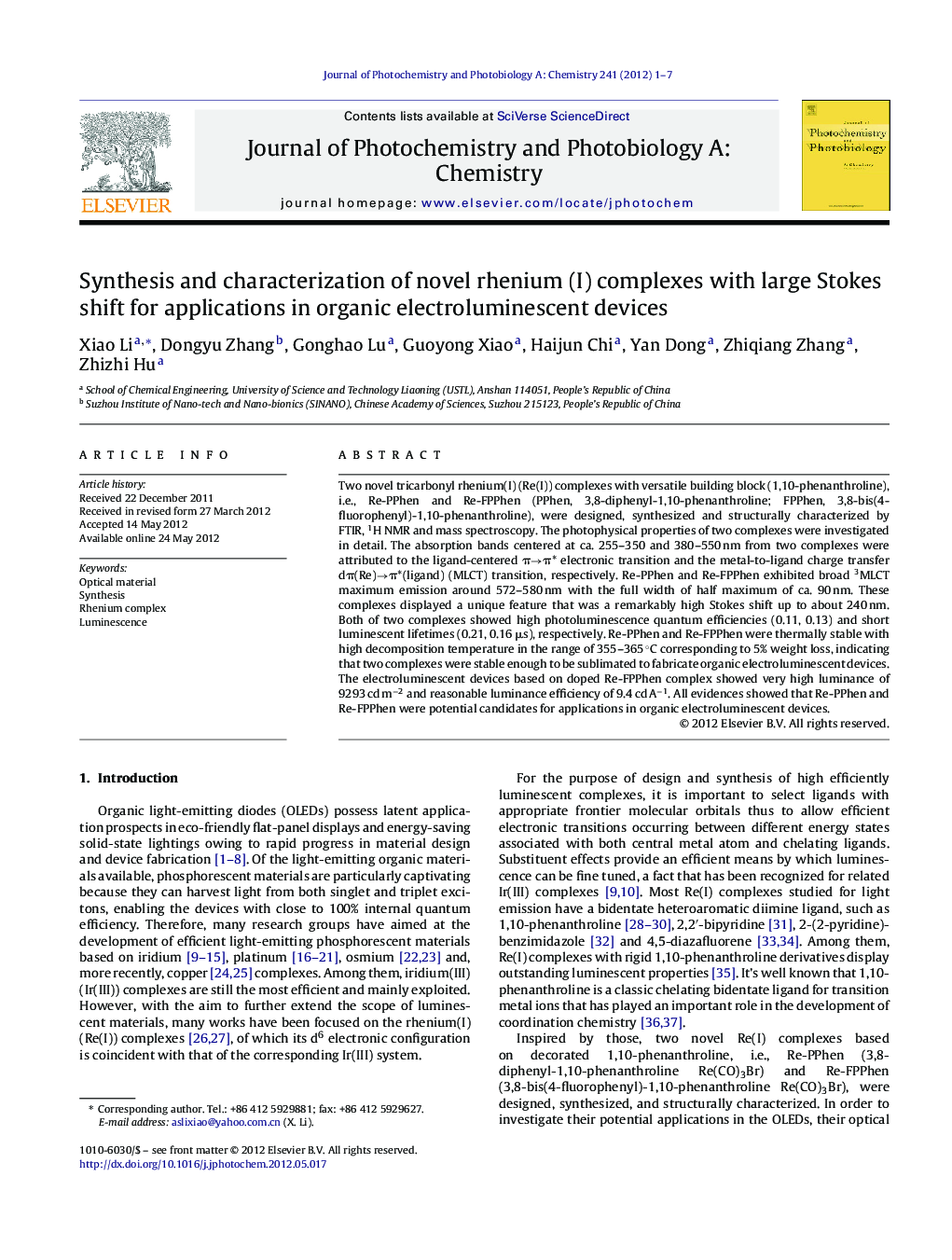| Article ID | Journal | Published Year | Pages | File Type |
|---|---|---|---|---|
| 26951 | Journal of Photochemistry and Photobiology A: Chemistry | 2012 | 7 Pages |
Two novel tricarbonyl rhenium(I) (Re(I)) complexes with versatile building block (1,10-phenanthroline), i.e., Re-PPhen and Re-FPPhen (PPhen, 3,8-diphenyl-1,10-phenanthroline; FPPhen, 3,8-bis(4-fluorophenyl)-1,10-phenanthroline), were designed, synthesized and structurally characterized by FTIR, 1H NMR and mass spectroscopy. The photophysical properties of two complexes were investigated in detail. The absorption bands centered at ca. 255–350 and 380–550 nm from two complexes were attributed to the ligand-centered π→π* electronic transition and the metal-to-ligand charge transfer dπ(Re)→π*(ligand) (MLCT) transition, respectively. Re-PPhen and Re-FPPhen exhibited broad 3MLCT maximum emission around 572–580 nm with the full width of half maximum of ca. 90 nm. These complexes displayed a unique feature that was a remarkably high Stokes shift up to about 240 nm. Both of two complexes showed high photoluminescence quantum efficiencies (0.11, 0.13) and short luminescent lifetimes (0.21, 0.16 μs), respectively. Re-PPhen and Re-FPPhen were thermally stable with high decomposition temperature in the range of 355–365 °C corresponding to 5% weight loss, indicating that two complexes were stable enough to be sublimated to fabricate organic electroluminescent devices. The electroluminescent devices based on doped Re-FPPhen complex showed very high luminance of 9293 cd m−2 and reasonable luminance efficiency of 9.4 cd A−1. All evidences showed that Re-PPhen and Re-FPPhen were potential candidates for applications in organic electroluminescent devices.
► Two novel Re(I) complexes were designed, synthesized and structurally characterized. ► The photophysical properties of two complexes were investigated in detail. ► The complexes display a remarkably high Stokes shift up to about 240 nm. ► Devices based on doped Re-FPPhen showed very high luminance of 9293 cd m−2.
